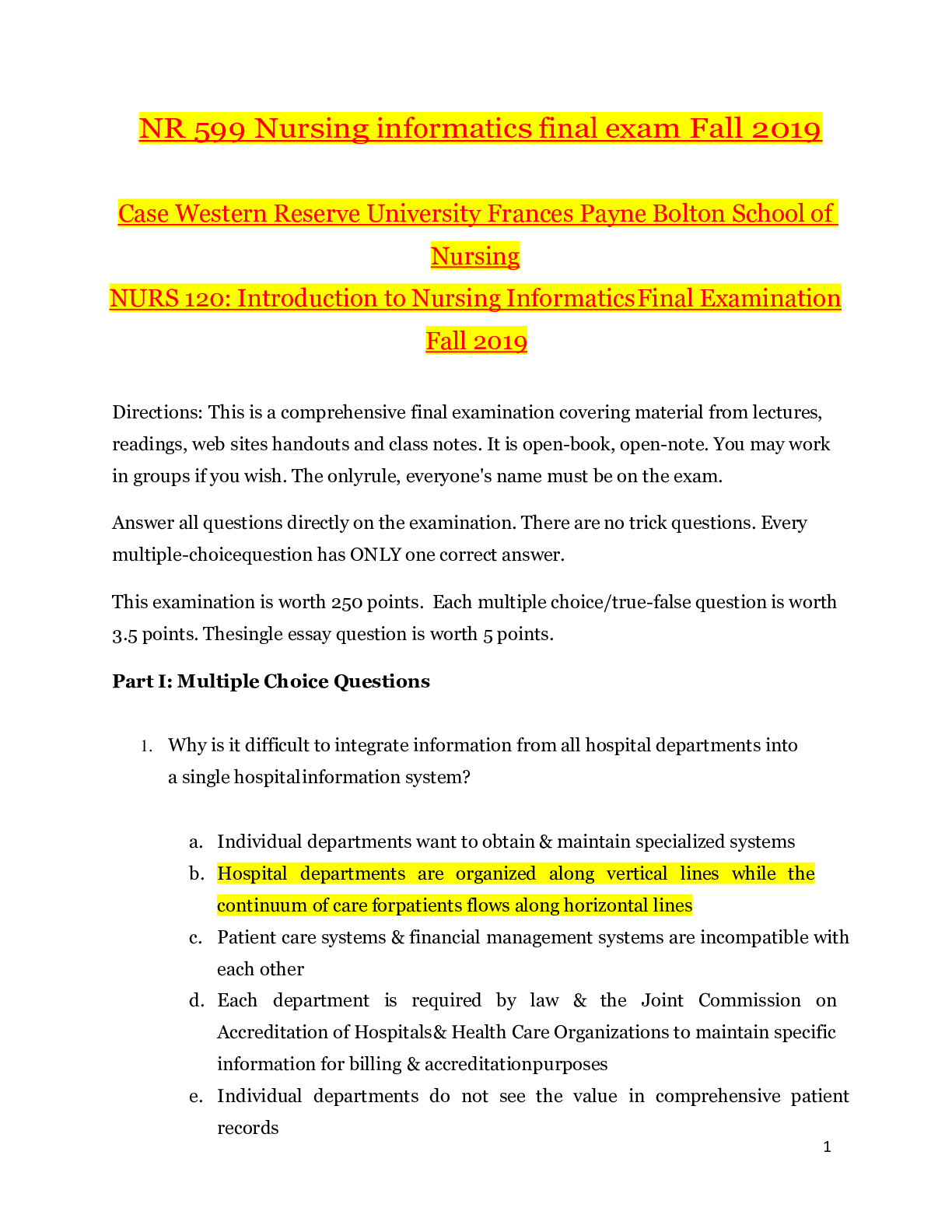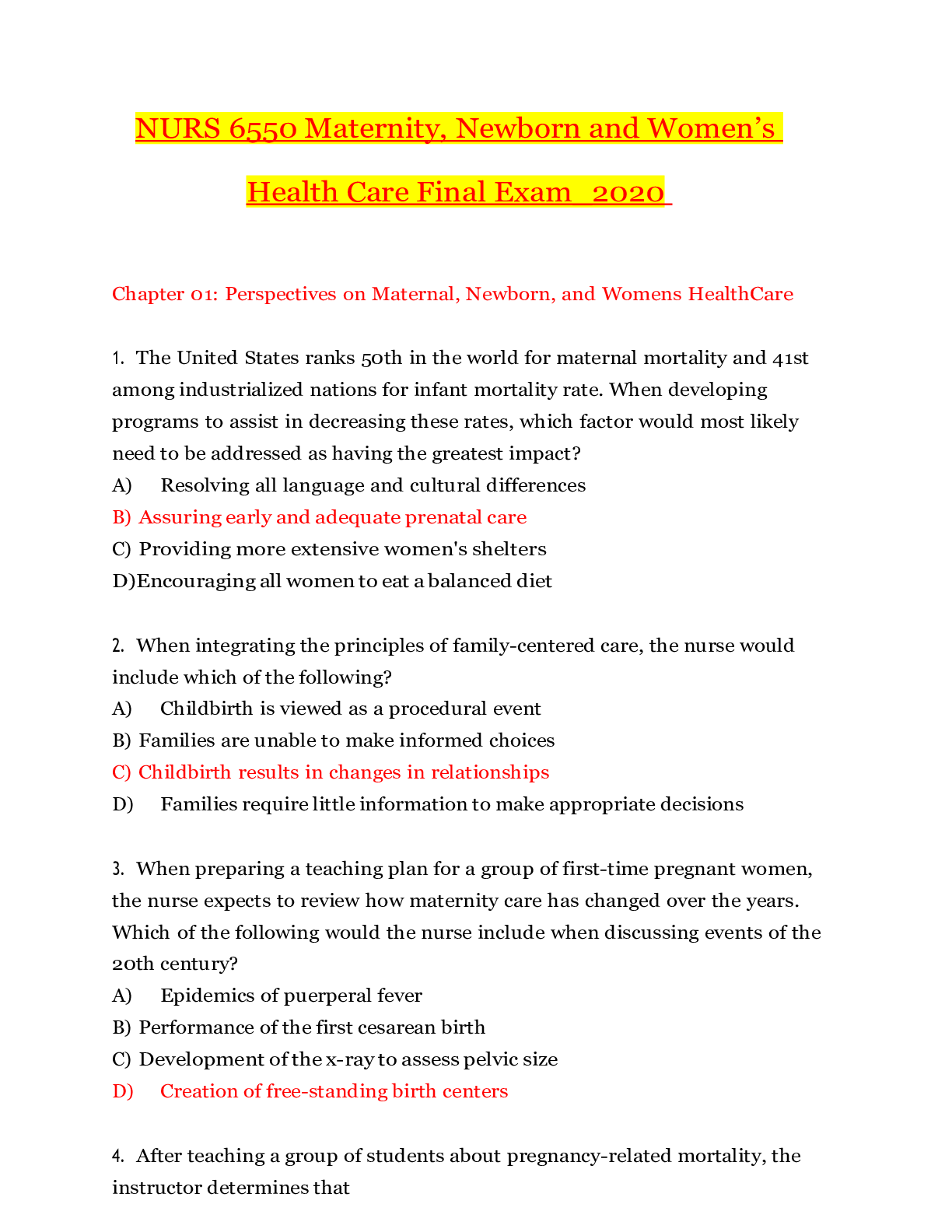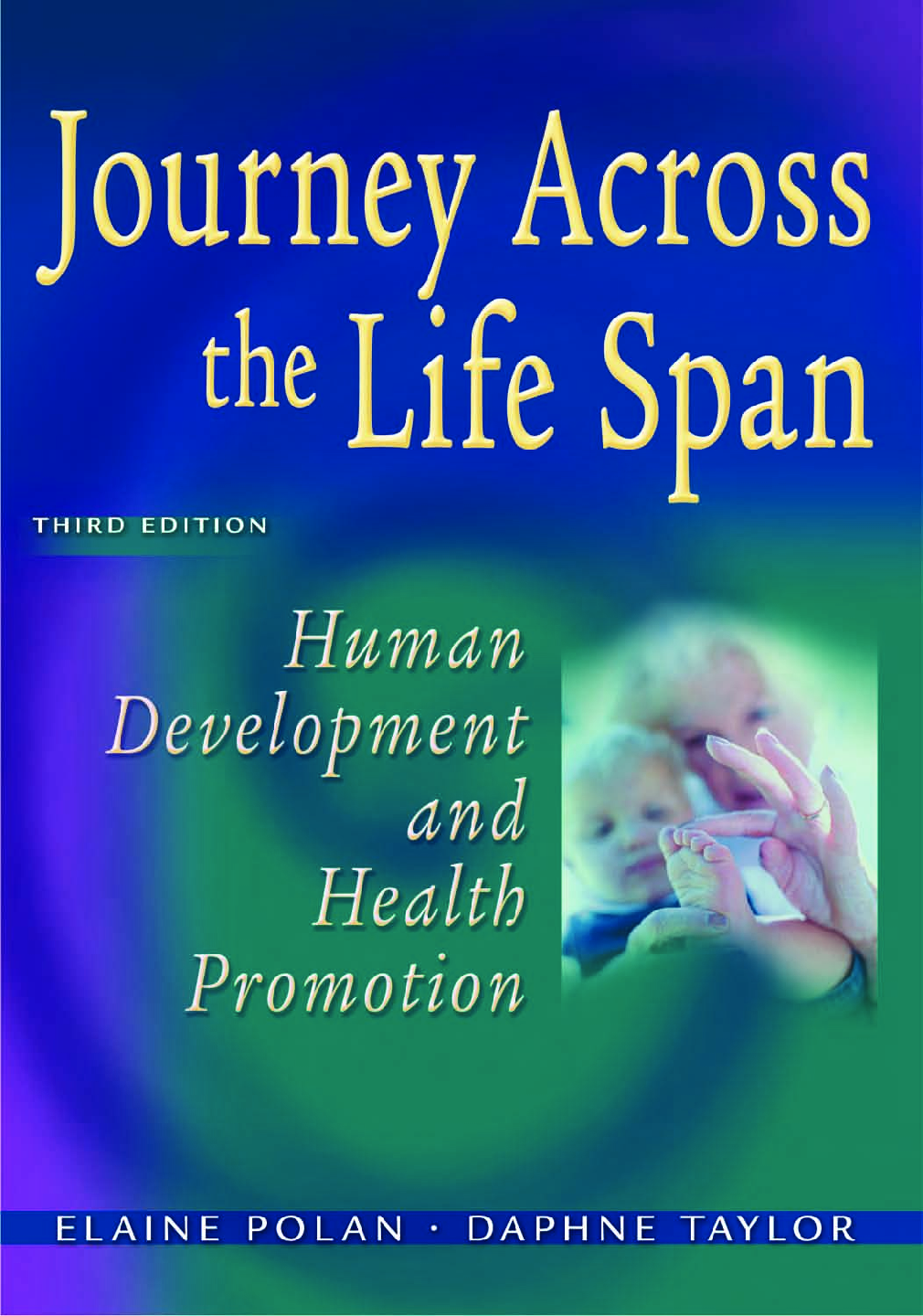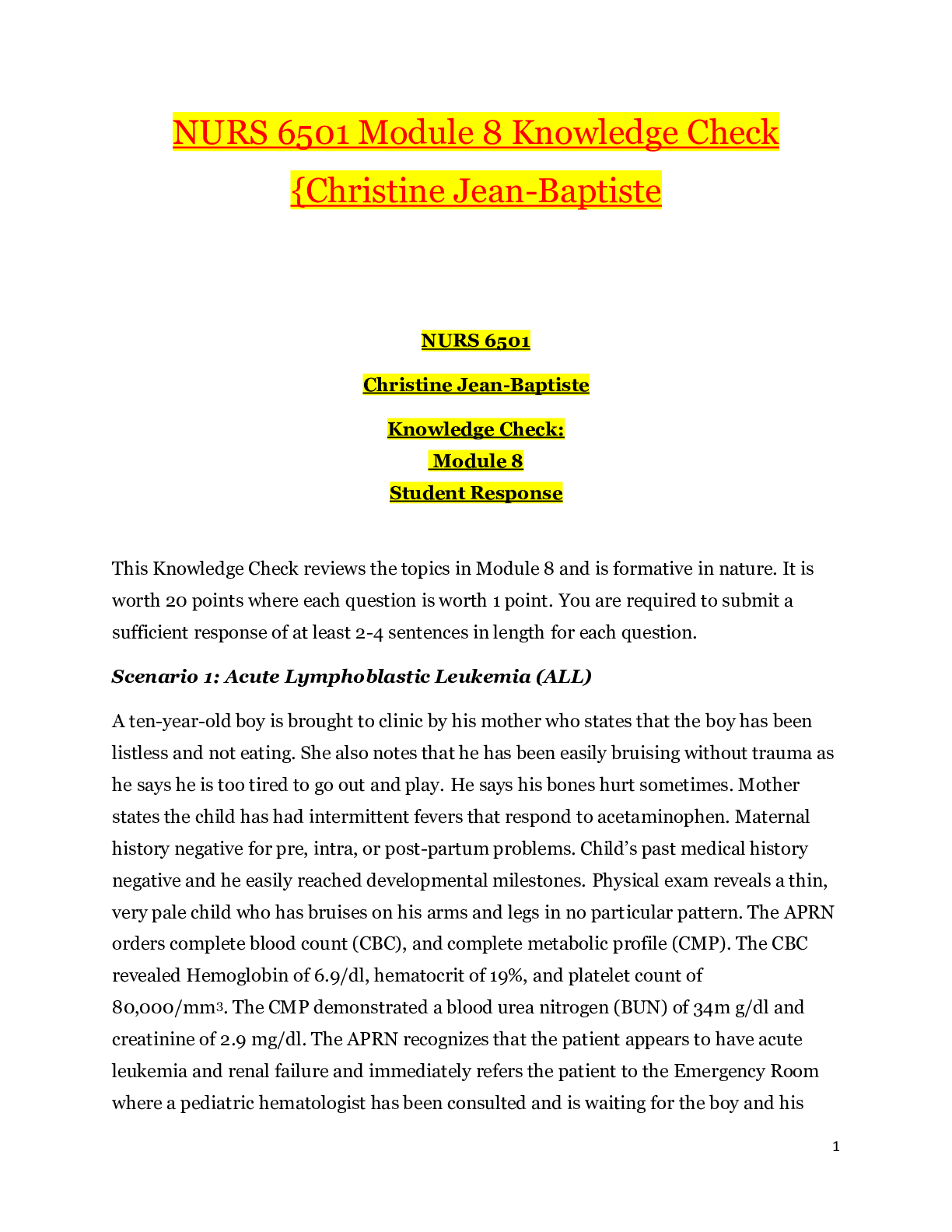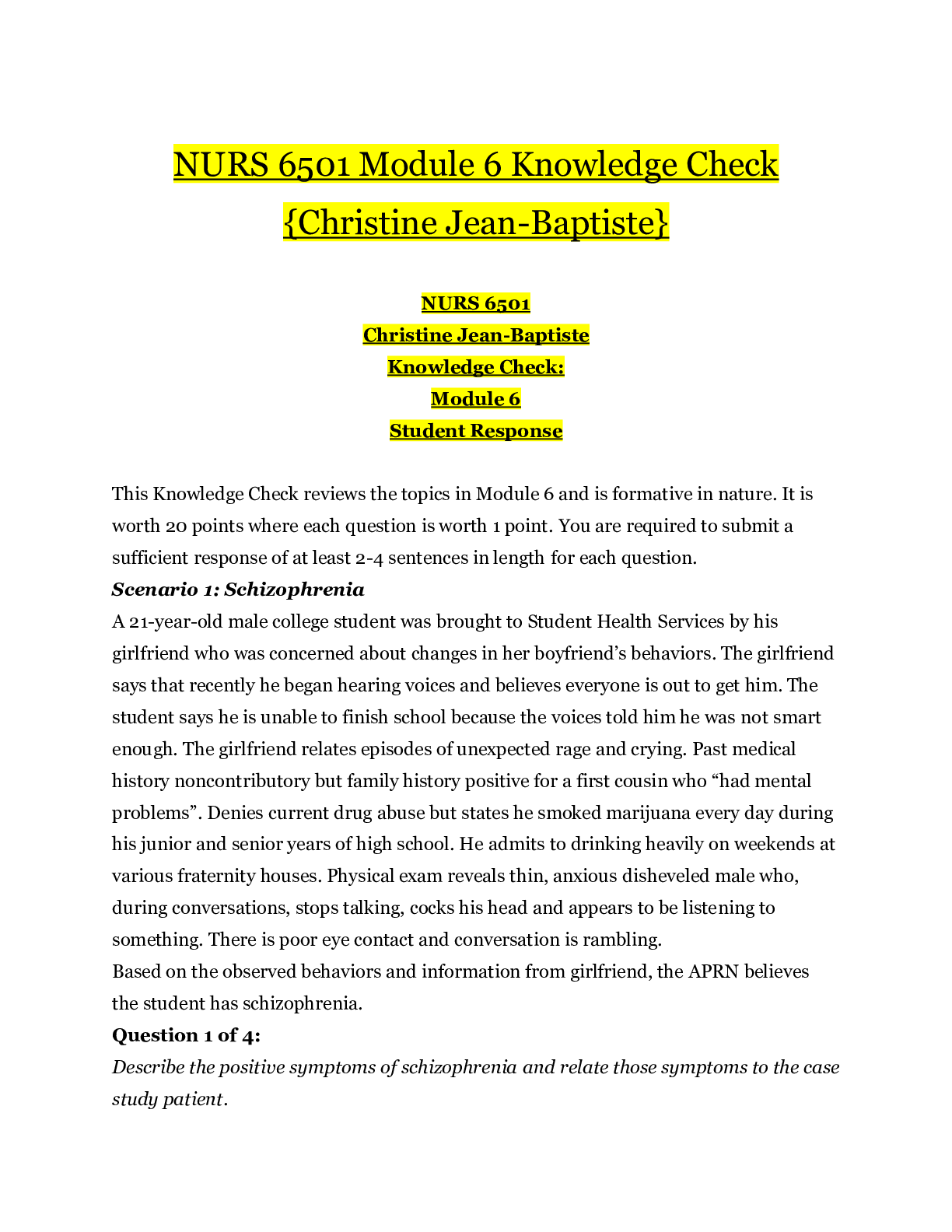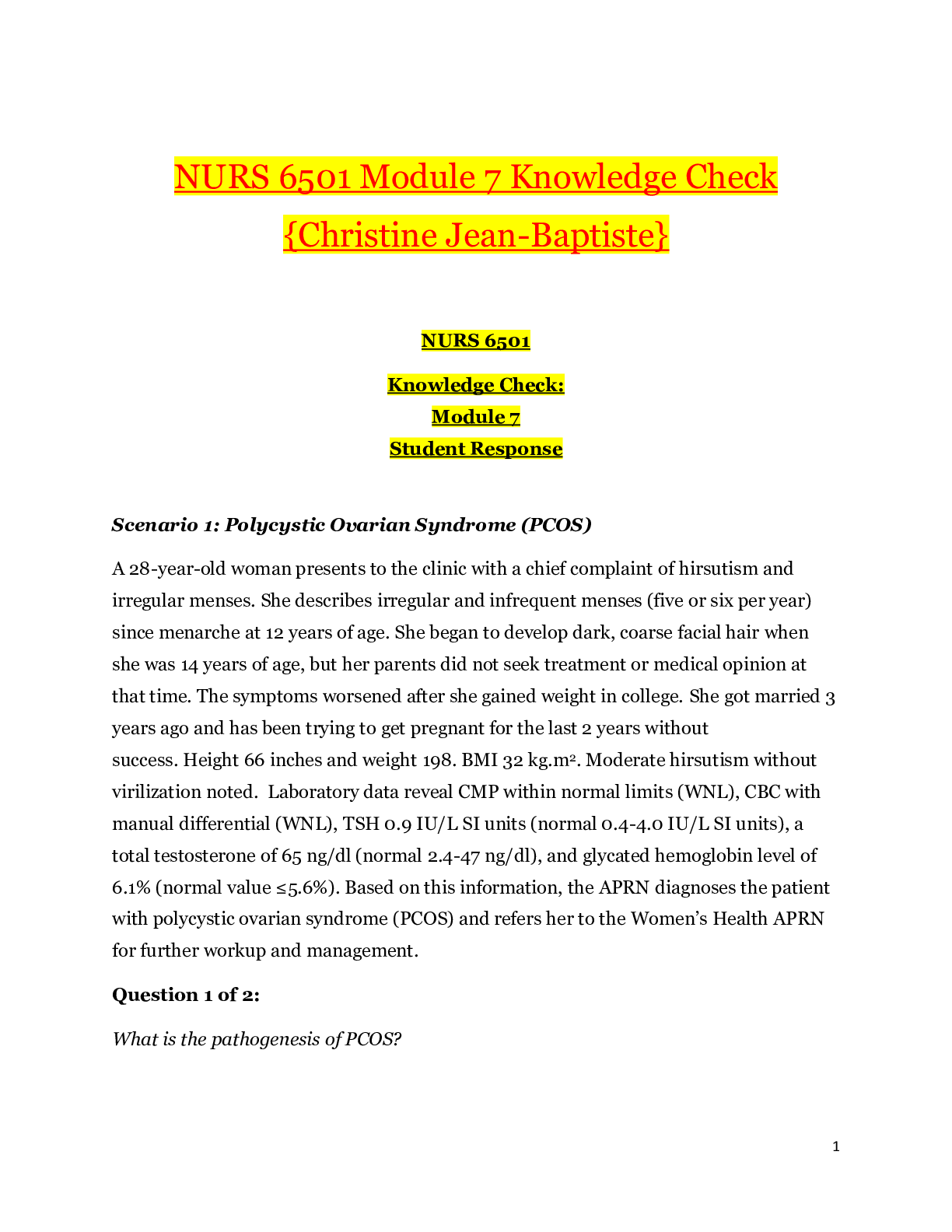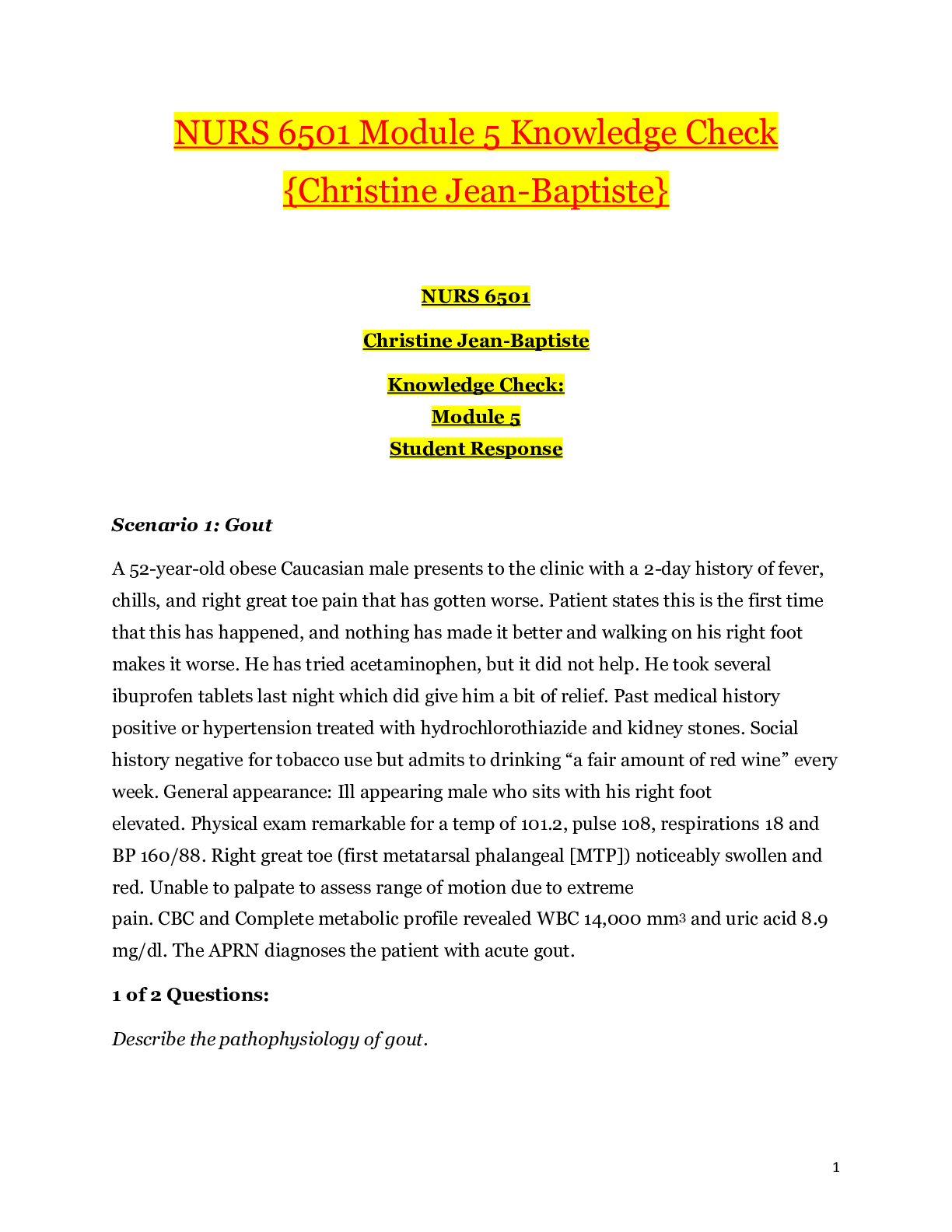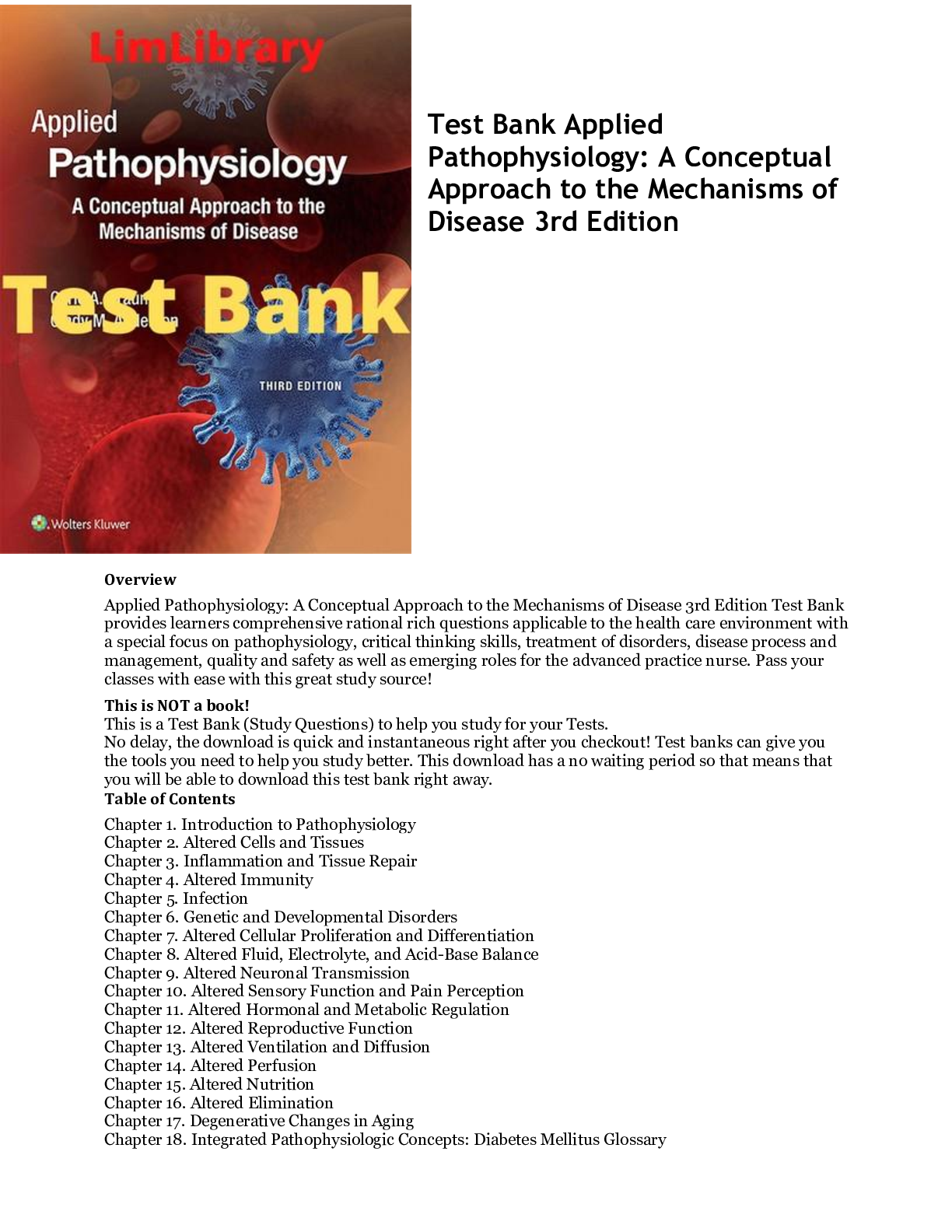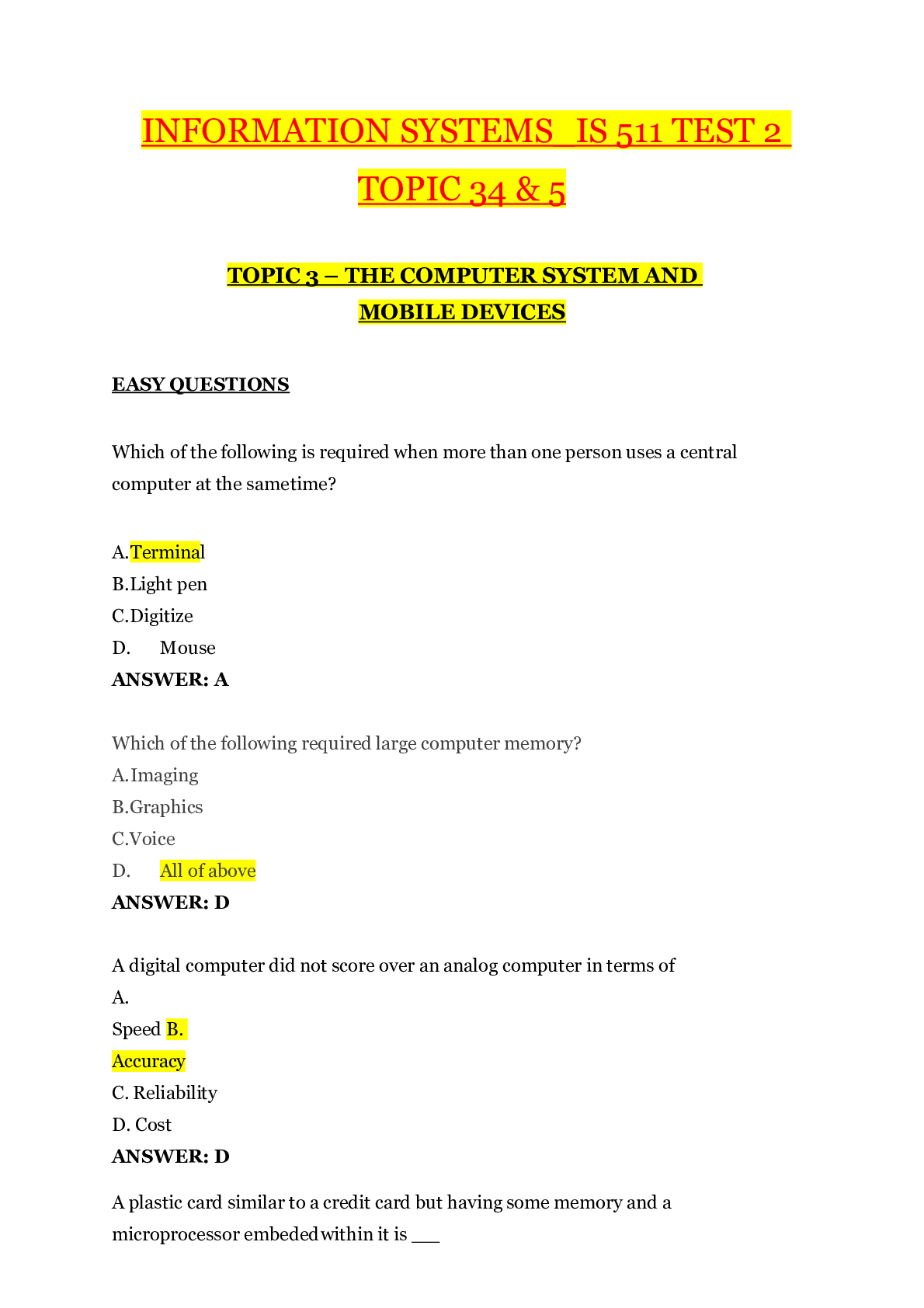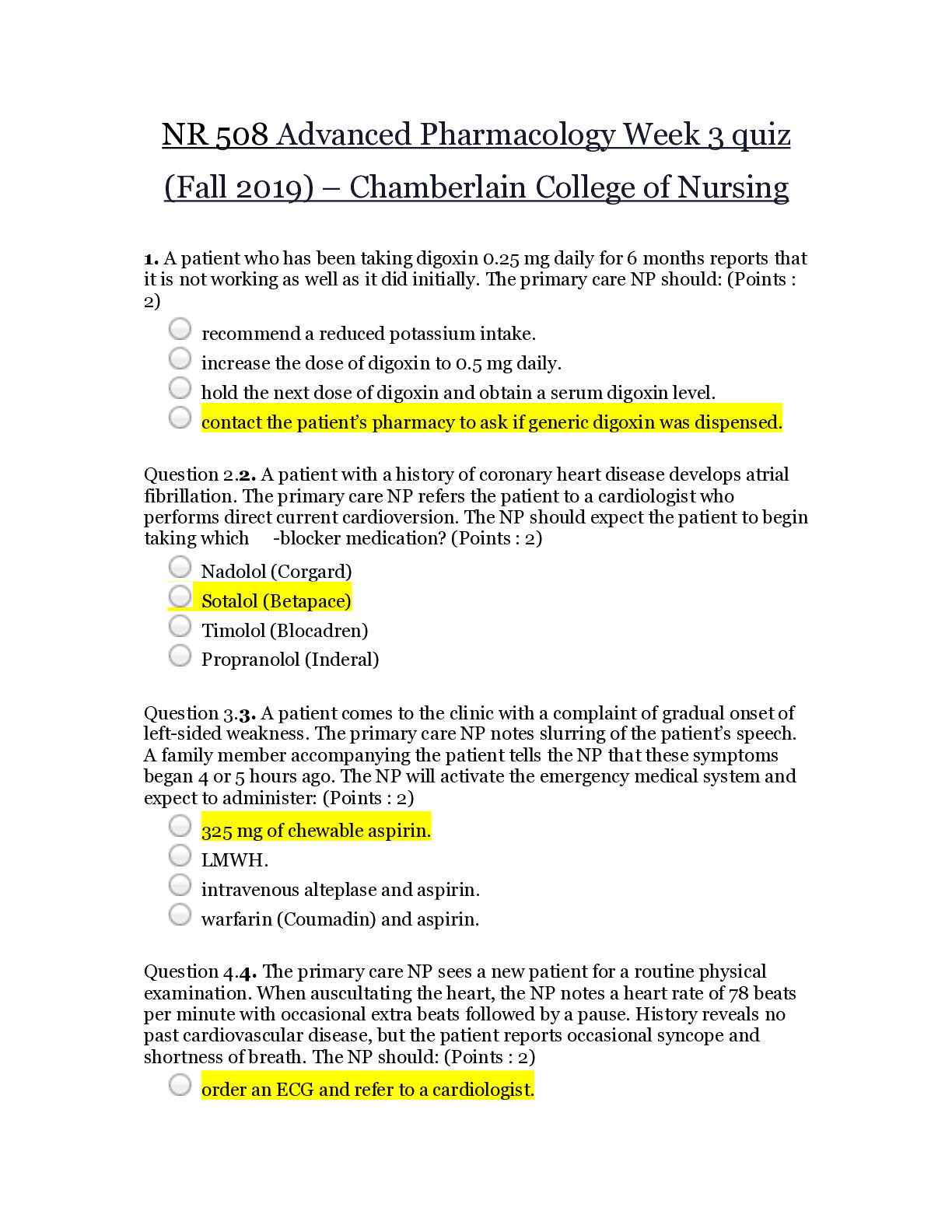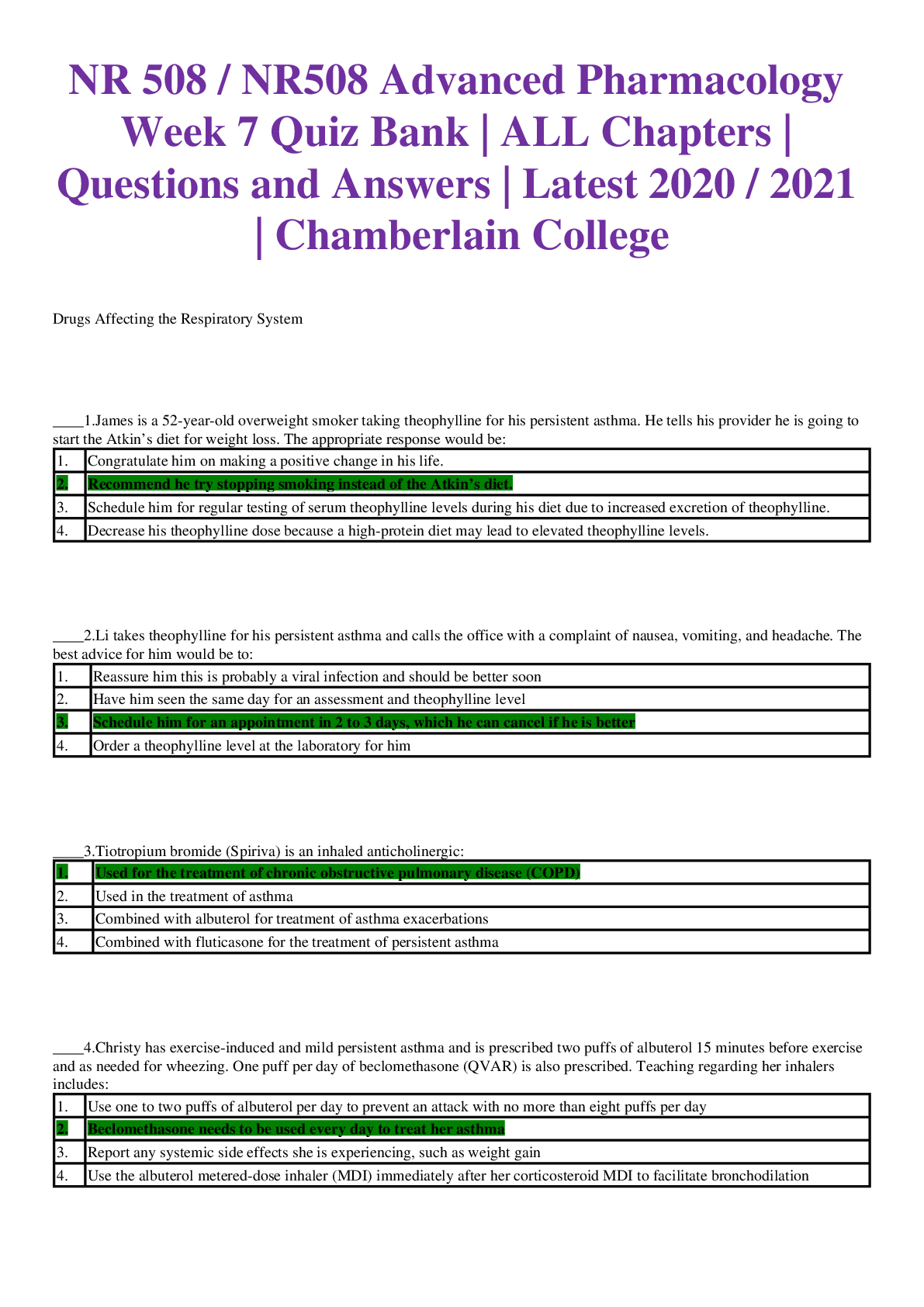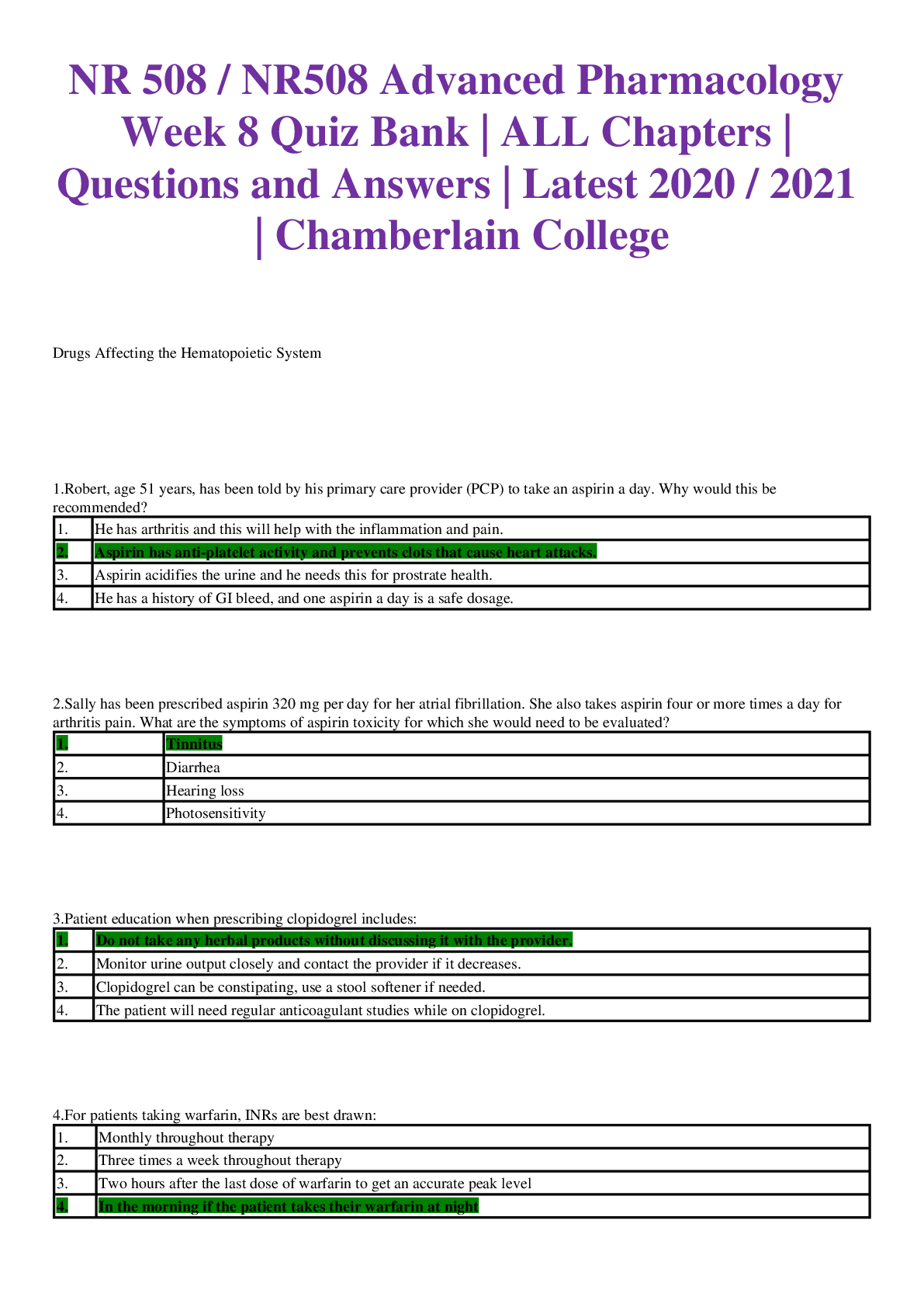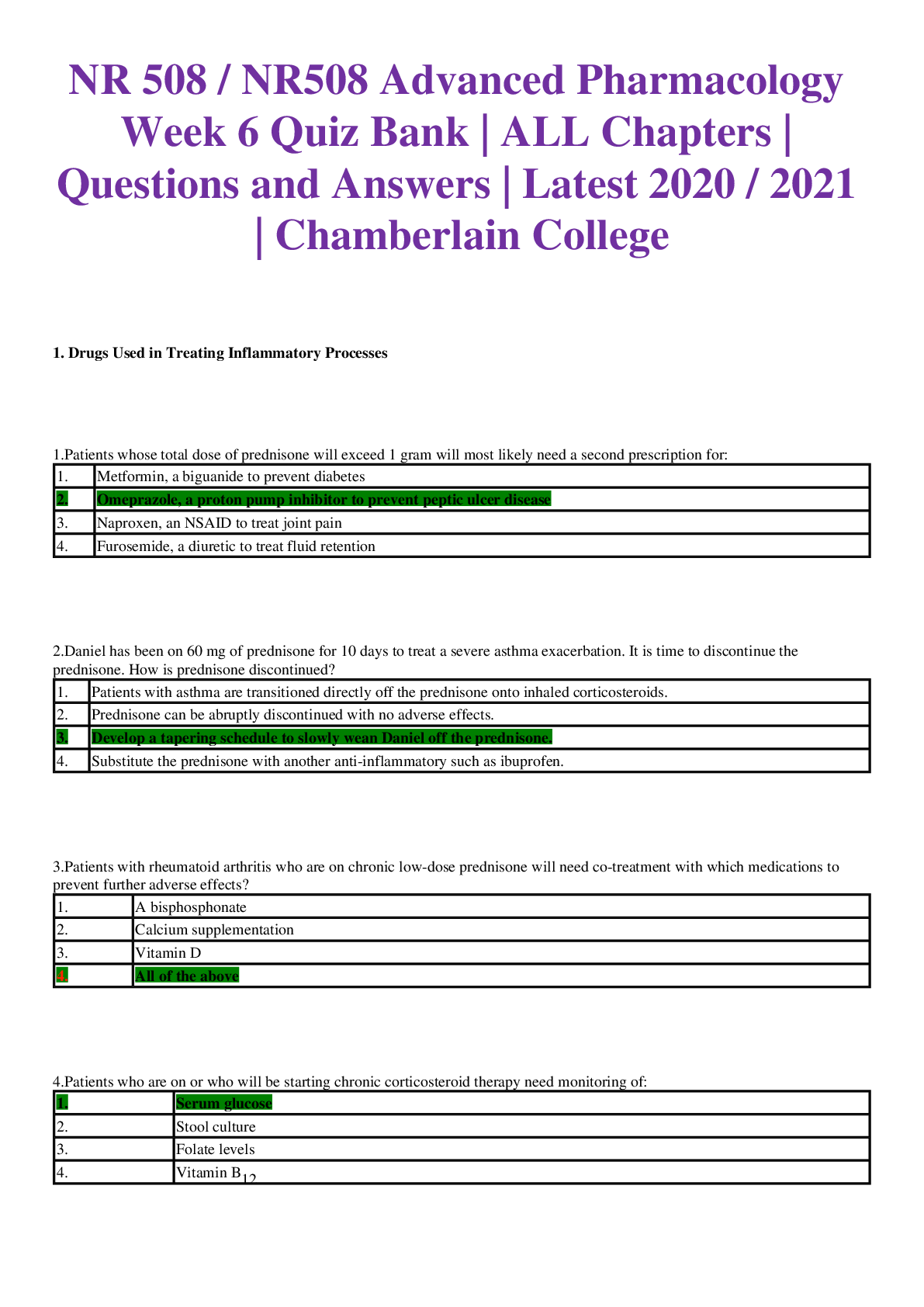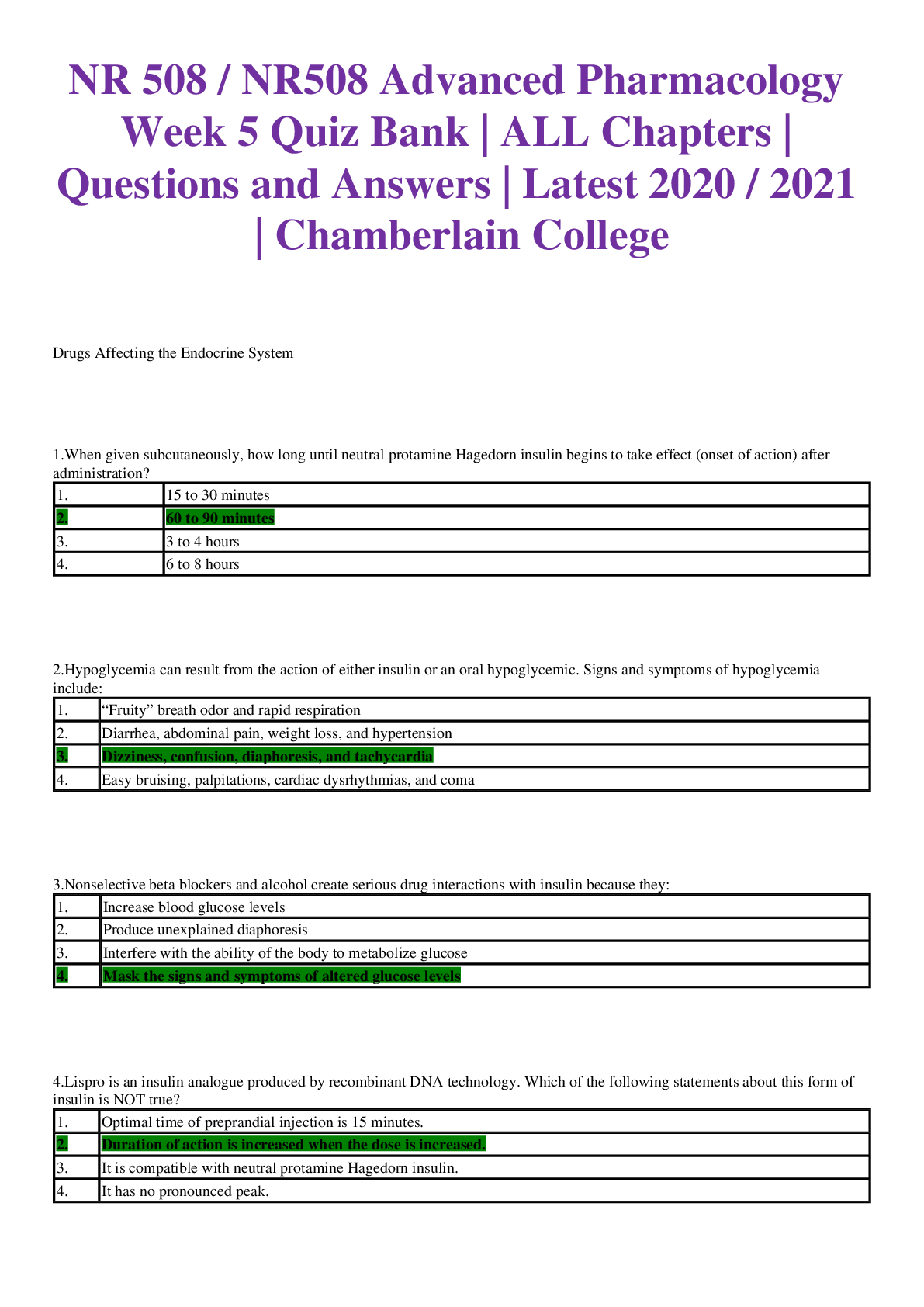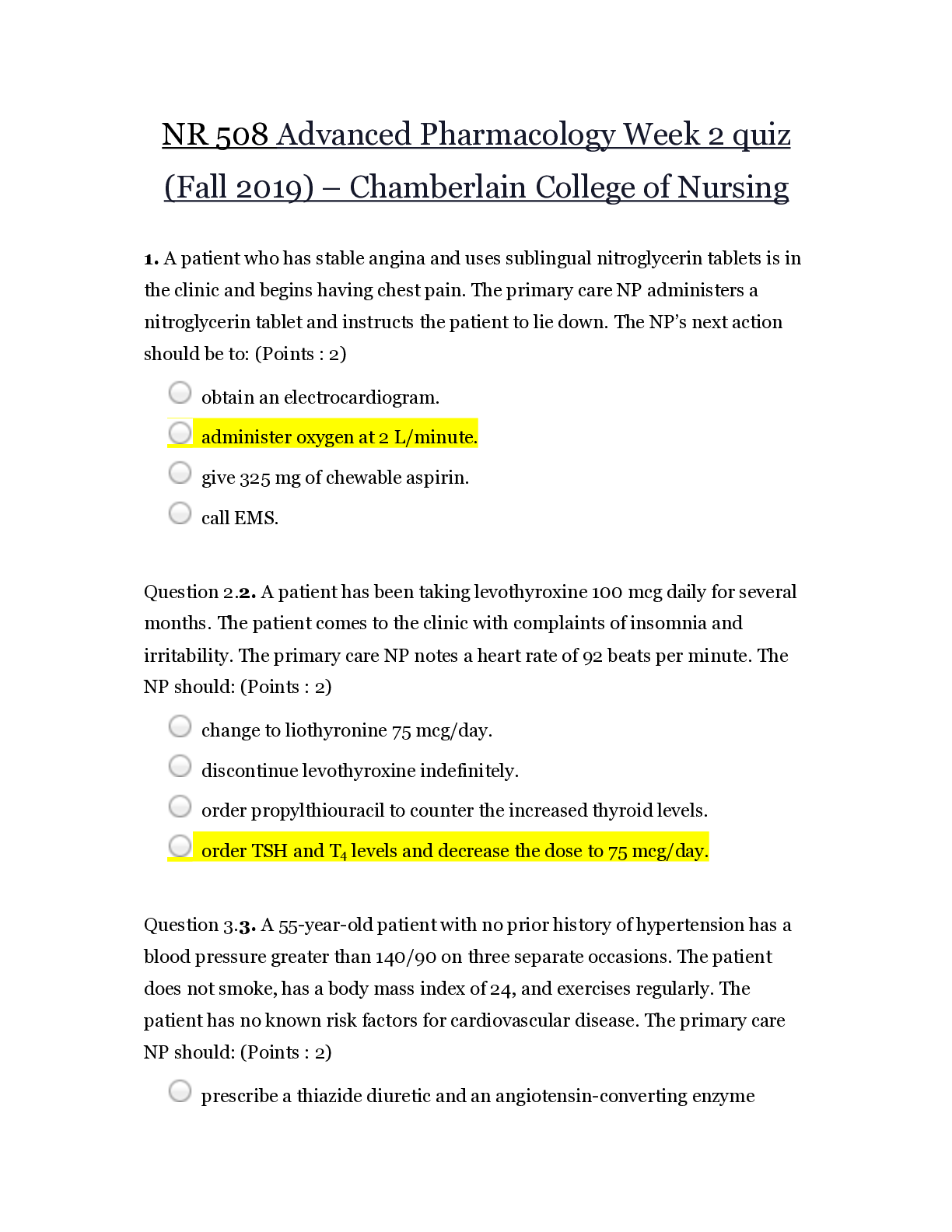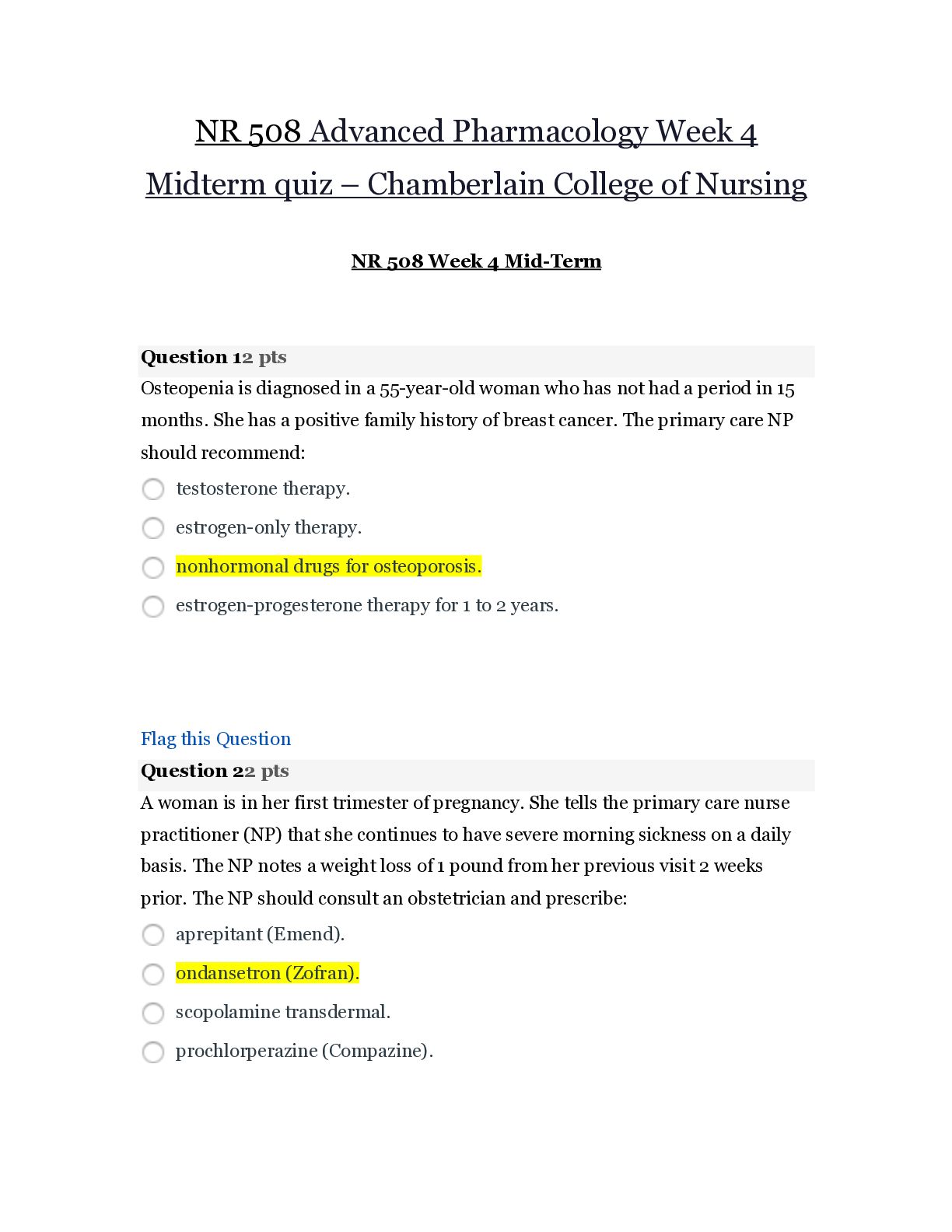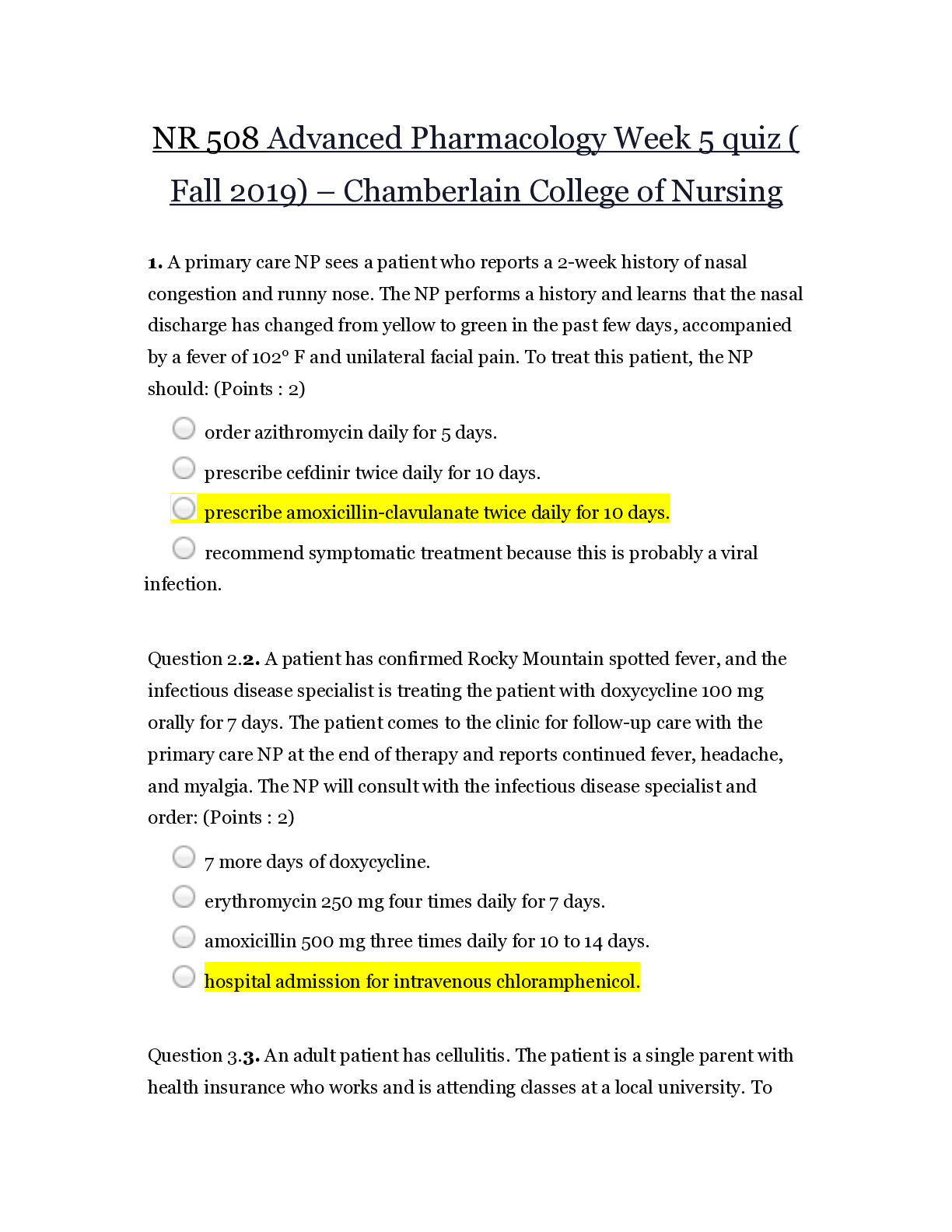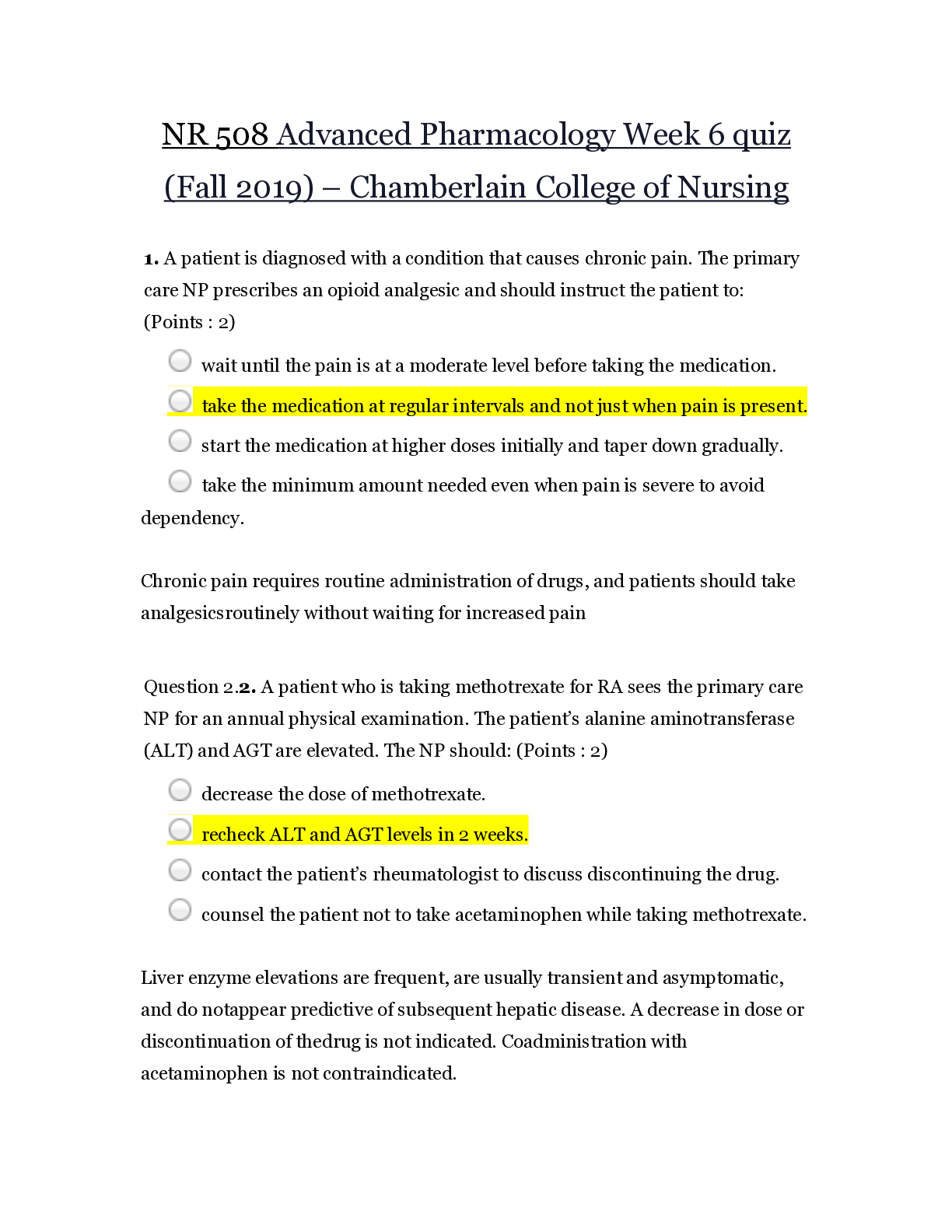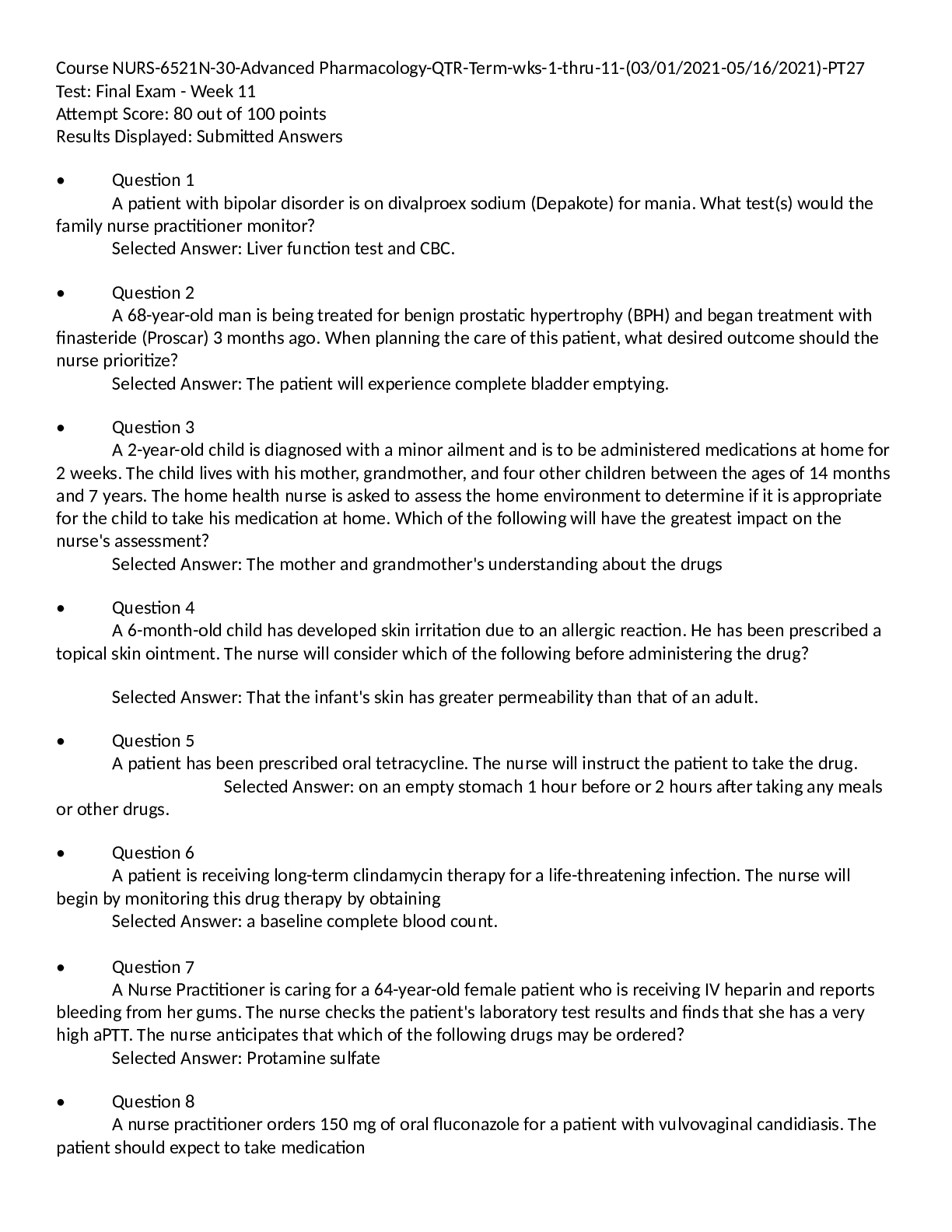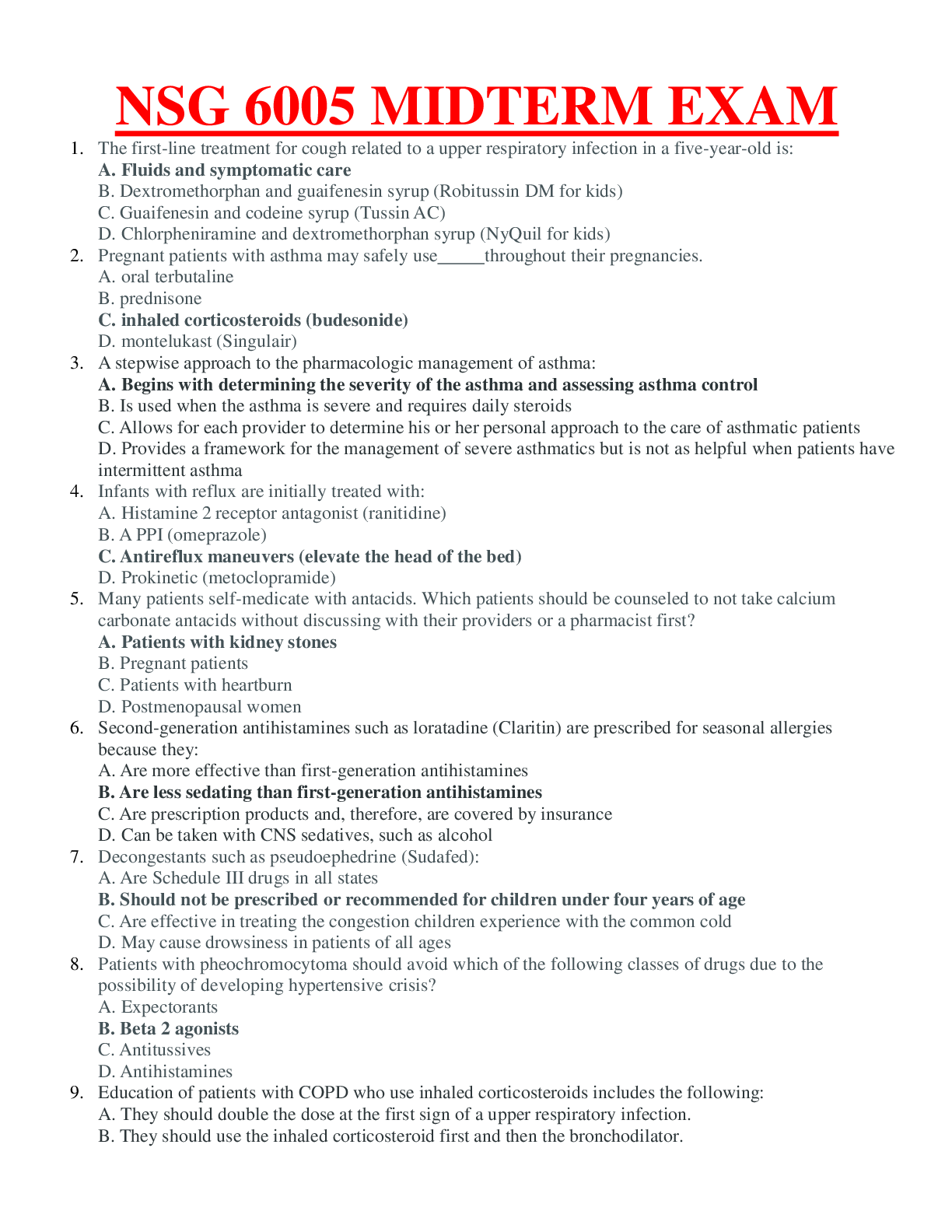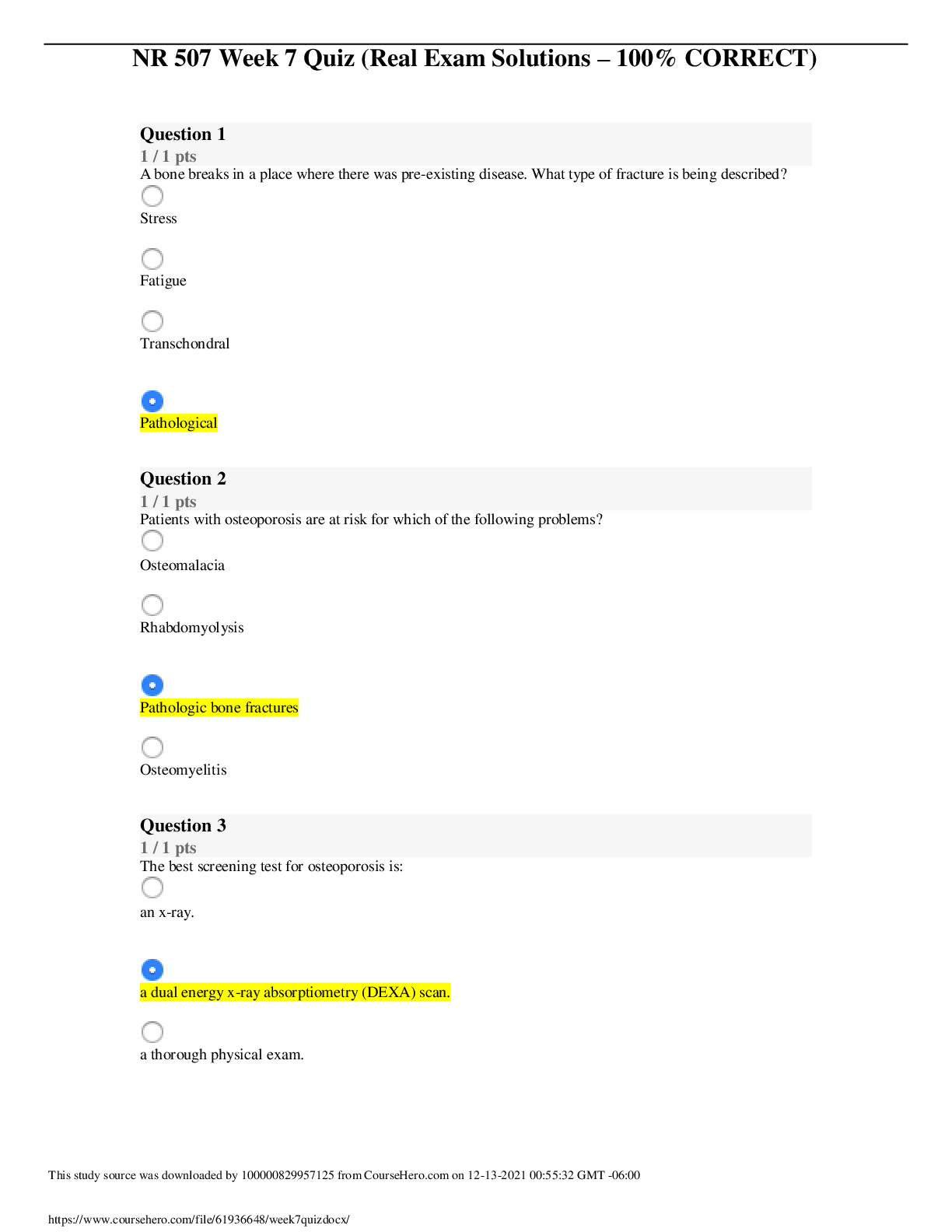Pharmacology > EXAM > NR 508 Advanced Pharmacology Week 6 Quiz Fall 2020 | NR508 Advanced Pharmacology Week 6 Quiz_A Grade (All)
NR 508 Advanced Pharmacology Week 6 Quiz Fall 2020 | NR508 Advanced Pharmacology Week 6 Quiz_A Grade
Document Content and Description Below
NR 508 Advanced Pharmacology Week 6 Quiz Fall 2020 1. A patient is diagnosed with a condition that causes chronic pain. The primary care NP prescribes an opioid analgesic and should instruct the pati... ent to: (Points : 2) wait until the pain is at a moderate level before taking the medication. take the medication at regular intervals and not just when pain is present. start the medication at higher doses initially and taper down gradually. take the minimum amount needed even when pain is severe to avoid dependency. Chronic pain requires routine administration of drugs, and patients should take analgesicsroutinely without waiting for increased pain Question 2.2. A patient who is taking methotrexate for RA sees the primary care NP for an annual physical examination. The patient’s alanine aminotransferase (ALT) and AGT are elevated. The NP should: (Points : 2) decrease the dose of methotrexate. recheck ALT and AGT levels in 2 weeks. contact the patient’s rheumatologist to discuss discontinuing the drug. counsel the patient not to take acetaminophen while taking methotrexate. Liver enzyme elevations are frequent, are usually transient and asymptomatic, and do notappear predictive of subsequent hepatic disease. A decrease in dose or discontinuation of thedrug is not indicated. Coadministration with acetaminophen is not contraindicated. Question 3.3. A patient who has migraine headaches tells the primary care NP that drinking coffee and taking nonsteroidal antiinflammatory drugs (NSAIDs) seems to help with discomfort. The NP should tell the patient that: (Points : 2) this combination can lead to longer lasting headache pain. these substances are not indicated for migraine headaches. doing this can increase the risk of more chronic migraines. an opioid analgesic would be a better choice for migraine pain. Overuse of pain or migraine medications can cause a transformed migraine,which is a long-lasting headache. Following a migraine episode, the patienthas rebound headache daily or nearly daily. NSAIDs, caffeine, opiates, andtriptans can cause these rebound headaches. NSAIDs and caffeine are oftenused to treat migraines. Narcotics and barbiturates increase the risk fordevelopment of chronic migraine headaches and should not be first-linedrugs Question 4.4. The primary care NP sees an adolescent who reports moderate to severe dysmenorrhea. The NP recommends an NSAID and counsels the patient about its use. Which statement by the patient indicates a need for further teaching? (Points : 2) “I should not take this if I think I might be pregnant.” “I should take this medication on a schedule for 2 to 3 days.” “I will begin taking this 1 to 3 days before my period begins.” “I will take this medicine every 4 to 6 hours as needed for pain.” When treating primary dysmenorrhea, NSAIDs should be started 24 to 72 hours before thepatient starts menstrual bleeding. The medication should be taken on a routine basis for 2 to 3days. It should not be taken during pregnancy Question 5.5. A 60-year-old woman has a central dual-energy x-ray absorptiometry with a T-score of 1.9. A health history reveals no risk factors for osteoporosis. The primary care NP should: (Points : 2) prescribe alendronate sodium (Fosamax). counsel her to increase her physical activity. prescribe calcitonin (Miacalcin nasal spray). prescribe supplemental calcium and vitamin D. This woman’s T-score is less than 2.5 and indicates osteoporosis. She should begin treatmentwith a bisphosphonate. Increasing physical activity and taking supplemental calcium andvitamin D are indicated as well but only as part of a medication regimen. Calcitonin is not afirst-line medication. Question 6.6. A 50-year-old white woman who is experiencing menopause asks the primary care NP what she can do to prevent osteoporosis. She has a negative family history and no risk factors. The NP should counsel her to: (Points : 2) consider bisphosphonate therapy in 5 years. undergo bone density testing every 2 years. avoid high-impact sports that can lead to fractures. take supplemental calcium and vitamin D every day. Question 7.7. A patient has been taking an opioid analgesic for 2 weeks after a minor outpatient procedure. At a follow-up clinic visit, the patient tells the primary care NP that he took extra doses for the past 2 days because of increased pain and wants an early refill of the medication. The NP should suspect: (Points : 2) dependence. drug addiction. possible misuse. increasing pain. Unsanctioned dose increases are a sign of possible drug misuse. Dependence refers to anabstinence or withdrawal syndrome. Drug addiction is an obsession with obtaining and usingthe drug for nonmedical purposes. The patient should not have increased pain at 2 weeks. Question 8.8. A patient reports having an acute onset of low back pain associated with lifting a heavy object the day before. Besides advising the patient to rest and apply ice, the primary care NP should prescribe: (Points : 2) an opioid analgesic. metaxalone (Skelaxin) cyclobenzaprine (Flexeril). a nonsteroidal antiinflammatory drug (NSAID). NSAIDs and acetaminophen are first-line analgesic treatments for low back pain. Opioids areused for severe low back pain. The other two medications are not first-line treatments Question 9.9. A patient who is taking an antibiotic to treat bronchitis reports moderate rib pain associated with frequent coughing. The primary care NP should consider prescribing: (Points : 2) morphine. hydrocodone. hydromorphone. oxycodone CR. Hydrocodone is used for cough suppression as well as pain. Morphine can cause profoundrespiratory depression Question 10.10. A patient who has migraine headaches without an aura reports difficulty treating the migraines in time because they come on so suddenly. The patient has been using over-the-counter NSAIDs. The primary care NP should prescribe: (Points : 2) frovatriptan (Frova). sumatriptan (Imitrex). cyproheptadine (Periactin). dihydroergotamine (D.H.E. 45). If the patient is able to take medication at the earliest onset of migraine, ergots are usuallyeffective. Triptans are more effective when patients have difficulty “catching the headache intime.” Sumatriptan begins to work in 15 minutes and so would be indicated for this patient.Frovatriptan has a longer half-life. Cyproheptadine is not a first-line migraine treatment Question 11.11. A patient comes to the clinic and reports recurrent headaches. The patient has a headache diary, which reveals irritability and food cravings followed the next day by visual disturbances and unilateral right-sided headache, nausea, and photophobia lasting 2 to 3 days. The NP should recognize these symptoms as migraine. (Points : 2) classic hemiplegic basilar-type ophthalmoplegic These are symptoms of classic migraine. Hemiplegic migraine is characterized by motor andsensory symptoms. Basilar-type migraine includes vertigo, diplopia, dysarthria, tinnitus, anddecreased hearing. Ophthalmoplegic migraine affects the third, fourth, or fifth cranial nerve,causing permanent damage. Question 12.12. The primary care NP is performing a medication reconciliation on a patient who takes digoxin for congestive heart failure and learns that the patient uses ibuprofen as needed for joint pain. The NP should counsel this patient to: (Points : 2) use naproxen (Naprosyn) instead of ibuprofen. increase the dose of digoxin while taking the ibuprofen. use an increased dose of ibuprofen while taking the digoxin. take potassium supplements to minimize the effects of the ibuprofen. Question 13.13. A 70-year-old patient who has a high fracture risk has been taking alendronate (Fosamax) and calcium for 6 months. The primary care NP orders a urine NTx level, which is 42. The NP should discontinue the alendronate and prescribe: (Points : 2) raloxifene (Evista). teriparatide (Forteo). calcitonin (Miacalcin nasal spray). ibandronate sodium (Boniva). Teriparatide is used in patients with a high fracture risk or in whom bisphosphonate therapyhas failed. Raloxifene and ibandronate are second-line treatments for patients with usualfracture risks. Calcitonin is a last-line [Show More]
Last updated: 1 year ago
Preview 1 out of 12 pages

Reviews( 0 )
Document information
Connected school, study & course
About the document
Uploaded On
Apr 18, 2021
Number of pages
12
Written in
Additional information
This document has been written for:
Uploaded
Apr 18, 2021
Downloads
0
Views
34

.png)
